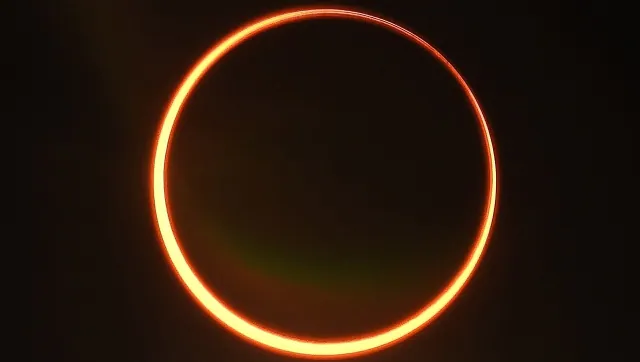FP TrendingApr 20, 2022 11:50:49 IST
This year’s first solar eclipse or Surya Grahan will occur on 30 April (Saturday). It will be the first of the two partial solar eclipses taking place in 2022.
Also, the solar eclipse on 30 April will take place four days prior to the moon reaching apogee- a moment when the celestial body is at its furthest point from Earth.
The upcoming solar eclipse will not be visible in India. People residing in parts of South America, the Atlantic Ocean, the Antarctic Ocean and the Pacific Ocean will be able to see it, according to space.com.
The second eclipses of 2022 will take place on 25 October. After these two eclipses, we won’t see any surya grahan until 2023.
What is a Solar Eclipse?
A solar eclipse takes place when the Moon passes between the Earth and the Sun exactly at the same time. When this moment occurs, the Moon conceals the Sun and prevents its rays from reaching the Earth. As a result, this rare phenomenon is called solar eclipse.
For the unversed, solar eclipses are categorised into four types. These are total, annular, partial, and hybrid eclipse. Two partial (solar eclipses) and two total (lunar eclipses) will occur this year. However, each eclipse will be viewable for people only residing in a specific location or region.
Timings of Solar Eclipse or Surya Grahan:
As per the Indian Standard Time (IST), the Solar Eclipse/Surya Grahan will start at 12:15 pm and end at 4:07 pm. It will last for about three hours and fifty-two minutes.
The eclipse will reach its peak phase at around 4:41 pm EDT (20:41 GMT), according to EarthSky.org. During this time, the moon’s shadow will fall on the Earth’s centre. The solar eclipse occurring on 30 April will obscure a maximum of 54 percent of the sun.
Why it will not be visible in India?
Reports suggest that this upcoming solar eclipse is a partial one, hence it will not be visible in India. The Sutak period will not be observed in India.
How to see the solar eclipse?
Many people enjoy the process of viewing the solar eclipse with their own eyes, but it is recommended that people should wear protective spectacles, or view the celestial events through binoculars, a telescope or a box projector.










